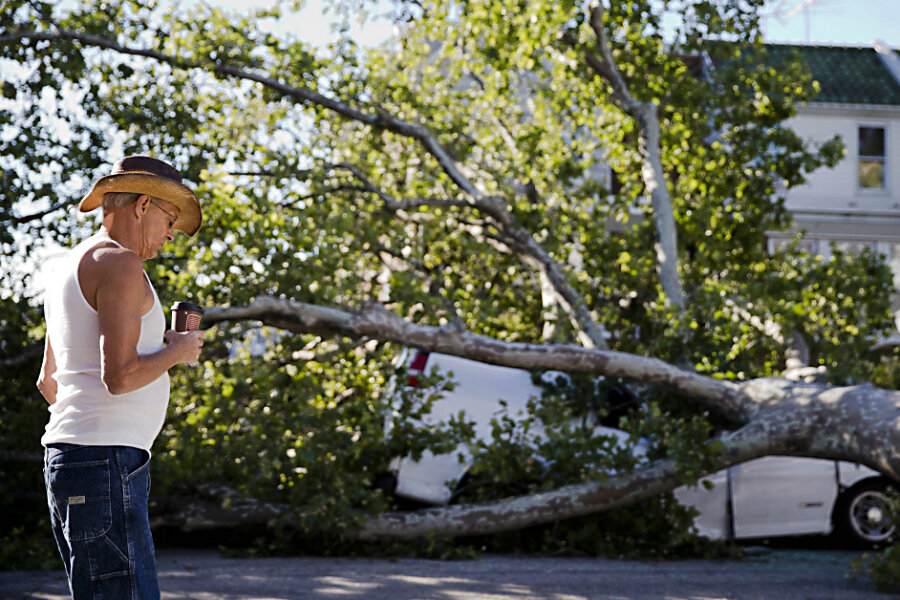400,000 without power after storms lash N.J. and Pennsylvania
Loading...
Power companies are scrambling to restore service after a series of fast-moving thunderstorms ravaged eastern Pennsylvania, New Jersey, and Connecticut Tuesday, leaving now nearly 400,000 people without electricity.
The numbers are a relative improvement from the 500,000 who experienced outages in Philadelphia Tuesday night, but companies have said complete restoration will likely take several days, reported the Philadelphia Inquirer.
In Pennsylvania, more than 165,000 homes and businesses were without power as of Wednesday morning, and in New Jersey, the number rose to nearly 210,000, according to utility companies.
The storms also cut power to public transportation lines in Philadelphia and New Jersey, forcing them to disrupt service temporarily. The Associated Press reported that the PATCO Speedline between southern New Jersey and Philadelphia, the New Jersey Transit, and Southeastern Pennsylvania Transportation Authority (SEPTA) all had to suspend operations on some of their lines.
Authorities say that the storm system is the same one that produced tornadoes in the Midwest, whose aftermath is being compared to the wreckage in Philadelphia. The National Weather Service (NWS) is investigating whether a tornado formed in Gloucester County, where funnel clouds have been spotted, and one of the hardest hit areas alongside Camden and Salem counties.
Winds of as high as 71 and 75 mph have been recorded in Philadelphia and New Jersey respectively, according to the NWS. Buildings collapsed, the sky blackened, and trees fell.
Adrienne Johnson, a resident in Philadelphia’s Frankford neighborhood, described people running to their basements as the storm hit Tuesday evening. On her block alone, three trees landed on homes, which she said were old and should have been removed long ago.
“It looks like a war-torn area. Trees are everywhere,” Ms. Johnson told the Associated Press.
Wednesday brings a far quieter day, with clear blue skies and lower humidity, CBS Philly reported.
This report contains material from the Associated Press.








